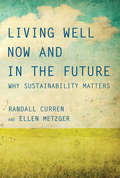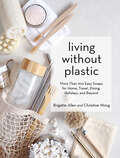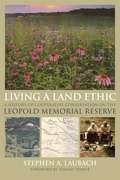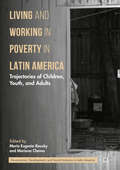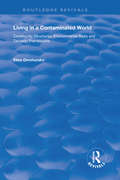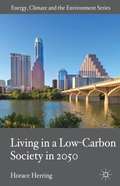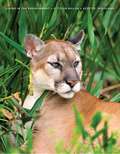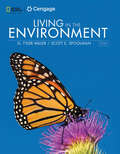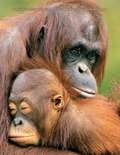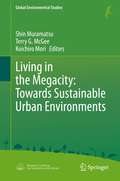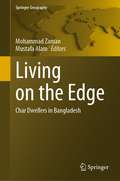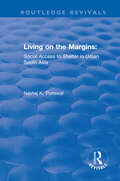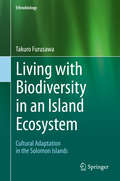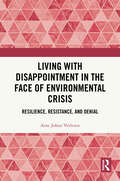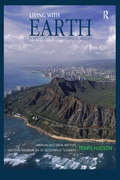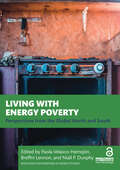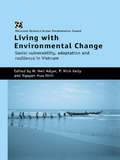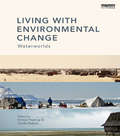- Table View
- List View
Living Well Now and in the Future: Why Sustainability Matters (The\mit Press Ser.)
by Randall Curren Ellen MetzgerA philosopher and a scientist propose that sustainability can be understood as living well together without diminishing opportunity to live well in the future.Most people acknowledge the profound importance of sustainability, but few can define it. We are ethically bound to live sustainably for the sake of future generations, but what does that mean? In this book Randall Curren, a philosopher, and Ellen Metzger, a scientist, clarify normative aspects of sustainability. Combining their perspectives, they propose that sustainability can be understood as the art of living well together without diminishing opportunity to live well in the future.Curren and Metzger lay out the nature and value of sustainability, survey the problems, catalog the obstacles, and identify the kind of efforts needed to overcome them. They formulate an ethic of sustainability with lessons for government, organizations, and individuals, and illustrate key ideas with three case studies. Curren and Metzger put intergenerational justice at the heart of sustainability; discuss the need for fair (as opposed to coercive) terms of cooperation to create norms, institutions, and practices conducive to sustainability; formulate a framework for a fundamental ethic of sustainability derived from core components of common morality; and emphasize the importance of sustainability education. The three illustrative case studies focus on the management of energy, water, and food systems, examining the 2010 Gulf of Mexico oil spill, Australia's National Water Management System, and patterns of food production in the Mekong region of Southeast Asia.
Living Without Plastic: More Than 100 Easy Swaps for Home, Travel, Dining, Holidays, and Beyond
by Christine Wong Brigette Allen“An eye-opening guide on how to lessen one’s dependence on plastics. . . . This is a clarion, convincing wake-up call to the scope of the global plastic problem and what readers can do about it. —Publishers Weekly <P><P>Embrace a plastic-free lifestyle with more than 100 simple, stylish swaps for everything from pens and toothbrushes to disposable bottles and the 5 trillion plastic bags we use—and throw out—every year. Use a natural loofah, not a synthetic sponge Buy milk in glass bottles or make homemade nut milk Opt for a waste-free shampoo bar Skip the printed receipt and opt for an email instead Wrap gifts beautifully with cloth <P><P>Organized into five sections—At Home, Food & Drink, Health & Beauty, On the Go, and Special Occasions—Living Without Plastic is a cover-to-cover collection of doable, difference making solutions, including a 30-Day Plastic Detox Program.
Living a Land Ethic
by Stephen A. LaubachIn 1935, in the midst of relentless drought, Aldo Leopold purchased an abandoned farm along the Wisconsin River near Baraboo, Wisconsin. An old chicken coop, later to become famous as the Leopold "Shack," was the property's only intact structure. The Leopold family embraced this spent farm as a new kind of laboratory-a place to experiment on restoring health to an ailing piece of land. Here, Leopold found inspiration for writing "A Sand County Almanac," his influential book of essays on conservation and ethics. "Living a Land Ethic" chronicles the formation of the 1,600-acre reserve surrounding the Shack. When the Leopold Memorial Reserve was founded in 1967, five neighboring families signed an innovative agreement to jointly care for their properties in ways that honored Aldo Leopold's legacy. In the ensuing years, the Reserve's Coleman and Leopold families formed the Sand County Foundation and the Aldo Leopold Foundation. These organizations have been the primary stewards of the Reserve, carrying on a tradition of ecological restoration and cooperative conservation. Author Stephen A. Laubach draws from the archives of both foundations, including articles of incorporation, correspondence, photos, managers' notes, and interviews to share with readers the Reserve's untold history and its important place in the American conservation movement. "
Living and Working With Snow, Ice and Seasons in the Modern Arctic: Everyday Perspectives (Arctic Encounters)
by Monica Tennberg Hannah Strauss-MazzulloThis book describes everyday practices of life in changing Arctic winter conditions. The authors explore the contemporary and situated outdoor practices in different work settings in Finnish Lapland and investigate how, for example, tourism, reindeer herding, cattle breeding and urban snow management adapt to the physically limiting or enabling features of cold temperatures, snow and ice. The book also highlights individual and societal adjustments to such harsh conditions and their seasonal changes in mobility, including winter cycling, use of snow mobiles and walking with studded shoes. The impact of a warming climate is a great concern for those utilising the enabling qualities of winter weather. The need, then, for continuous adaptation in everyday practices of work and mobility will increase in the future.
Living and Working in Poverty in Latin America: Trajectories of Children, Youth, and Adults (Governance, Development, and Social Inclusion in Latin America)
by María Eugenia Rausky Mariana ChavesThis edited volume studies the complex interrelation of poverty, work, and different stages in the life course, and how it contributes to the permanent existence of poverty and inequality in vulnerable groups in society. Mechanisms of productions and reproduction of these relationships are identified through empirical research carried out in four Latin American countries: Mexico, Argentina, Brazil, and Cuba. This book centers on the experiences of individuals in those less favored social groups who may have suffered structural poverty for decades, or who may have been simply deprived of a basic income to cover their most essential needs.
Living in a Contaminated World: Community Structures, Environmental Risks and Decision Frameworks (Routledge Revivals)
by Ellen OmohundroOriginally published in 2004. Using innovative methodology which considers both social and biophysical parameters to examine a range of mining and mineral production sites (including the controversial Superfund sites in the USA), this book focuses on how environmental regulators, local residents and other stakeholders work together to define the communities affected by environmental hazards and to assess the associated health impacts. It also questions the social factors which frame community-level decision-making about environmental risks, such as shared history, community identity, control in local decisions, distribution of power among local institutions, and participation in decisions about environmental risks and mitigation. The book argues that a better understanding of such factors would not only permit the development of more informed policies, but would also provide opportunities to improve community involvement in mitigation efforts.
Living in a Low-Carbon Society in 2050
by Horace HerringCombining theory, case studies and speculative fiction, a range of contributors, from leading UK academics to pioneering renewable activists, create a compelling picture of the potential perks and pitfalls of a low carbon future.
Living in the Anthropocene: Earth in the Age of Humans
by Edward O. Wilson Elizabeth Kolbert Thomas E. Lovejoy John W. Kress Jeffrey K. StineExplores the causes and implications of the Anthropocene, or Age of Humans, from multiple points of view including anthropological, scientific, social, artistic, and economic.Although we arrived only recently in Earth's timeline, humans are driving major changes to the planet's ecosystems. Even now, the basic requirements for human life--air, water, shelter, food, nature, and culture--are rapidly transforming the planet as billions of people compete for resources. These changes have become so noticeable on a global scale that scientists believe we are living in a new chapter in Earth's story: the Anthropocene, or Age of Humans. Living in the Anthropocene: Earth in the Age of Humans is a vital look at this era. The book contextualizes the Anthropocene by presenting paleontological, historical, and contemporary views of various human effects on Earth. It discusses environmental and biological systems that have been changed and affected; the causes of the Anthropocene, such as agricultural spread, pollution, and urbanization; how societies are responding and adapting to these changes; how these changes have been represented in art, film, television, and literature; and finally, offers a look toward the future of our environment and our own lives.
Living in the Environment (17th Edition)
by G. Tyler Miller Scott E. SpoolmanThis book provides you with basic scientific tools for understanding and thinking critically about the environment and the environmental problems we face.
Living in the Environment (MindTap Course List)
by G. Tyler Miller Scott E. SpoolmanPacked with captivating illustrations from National Geographic and MindTap's anywhere, anytime digital learning tools, Miller/Spoolman's LIVING IN THE ENVIRONMENT, 20th edition, empowers you with the knowledge and inspiration to make a difference in solving today's environmental issues. Emphasizing sustainability, the authors offer clear introductions to numerous environmental problems and balanced discussions to evaluate potential solutions. Up-to-date coverage includes no-till farming, CRISPR gene editing, phosphate crisis, genetically engineered foods, lithium supplies, recycling threats, economics and climate change, and more. Exercises throughout sharpen your critical-thinking skills, while Core Case Studies help you apply what you've learned. MindTap's exclusive content includes concept animations and conceptual learning activities to help you understand key environmental issues.
Living in the Environment: Principles, Connections, and Solutions
by G. Tyler Miller Scott E. Spoolman Jr.Learn how to make a difference in our environment! Using sustainability as the central theme, this current and thought-provoking book provides you with basic scientific tools for understanding and thinking critically about the environment and the environmental problems we face. Updated with new information, art, and "Good News" examples, this engaging book offers vivid case studies and hands-on quantitative exercises. The concept-centered approach transforms complex environmental topics and issues into key
Living in the Environment: Principles, Connections, and Solutions (13th Edition)
by G. Tyler MillerMiller's LIVING IN THE ENVIRONMENT, 13th Edition is a science-based book designed for introductory courses in environmental science. Tyler Miller is the most successful author in environmental science instruction because of his attention to currency, trend-setting presentation, outstanding student and instructor supplements, and his ability to retain and refine the pedagological hallmarks on which instructors have come to depend. In this edition Miller has added an on-line Web- based resource, entitled the Resource Integration Guide, which is updated quarterly with CNN. Today video clips, animations, and articles from InfoTrac. College Edition. Instructors can seamlessly incorporate current news articles and research findings to support classroom instruction. And, for the first time ever, students will receive a complementary CD-ROM entitled Interactive Concepts in Environmental Science. This groundbreaking addition integrates nearly 100 engaging animations and interactions with chapter summaries, flashcards, and Web-based quizzes. Organized by chapter, students will find links to relevant resources, narrated animations, interactive figures and prompts to review material and test themselves. The content in the Thirteenth Edition of LIVING IN THE ENVIRONMENT is everything you have come to expect and more.
Living in the Environment: Principles, Connections, and Solutions (Wadsworth Biology Ser.)
by Jr. G. Tyler MillerNIMAC-sourced textbook
Living in the Megacity: Towards Sustainable Urban Environments (Global Environmental Studies)
by Shin Muramatsu Terry G. McGee Koichiro MoriThis book tackles the challenging issues raised by the growth of large megacities from diverse perspectives and approaches. The central question raised by the growth of megacities is what effect their growth will have on the ability of the global population to live in sustainable, livable, and safe societies. In Part I, important issues on the relationships between megacities and sustainability of the global environment are specified. Part II shows what can be learned from the history and diversity of megacities to solve challenging issues of the present. We present practical approaches that can solve the issues of megacities particularly focusing on human activities that seek the more harmonious relationship between life amenities and the natural environment: population density and urban built environment; production and trade; and environmental education and enlightenment. Part III aims to answer the question, what aspects of megacities should be measured and assessed? Barometers are necessary to control human activities in megacities. We consider how to measure and assess performances of megacities, reviewing some cases of indicators that authors have developed. This publication highlights the challenging issues of the relationships between megacities and sustainability of the global environment and related issues that have accrued from them, based on the following three scales: long-term time scale from the past to the present and future; a vast spatial scale that links global space with local spaces; and the scale of various aspects of human socio-economic activities in megacities.
Living on Earth: Forests, Corals, Consciousness, and the Making of the World
by Peter Godfrey-SmithOne of the Washington Post's 50 Best Nonfiction Books of 2024The bestselling author of Other Minds shows how we and our ancestors have reinvented our planet.If the history of the Earth were compressed down to a year, our species would arise in the last thirty minutes or so of the final hour. But life itself is not such a late arrival: It has existed on Earth for something like 3.7 billion years—most of our planet’s history and over a quarter of the age of the universe (as far as we can tell). What have these organisms—bacteria, animals, plants, and the rest—done in all this time? In Living on Earth, the philosopher Peter Godfrey-Smith proposes a new way of understanding how the actions of living beings have shaped our planet. Where his acclaimed books Other Minds and Metazoa explored the riddle of how conscious minds came to exist on Earth, Living on Earth turns to what happens when we look at the mind from another side—when we come to see organisms as active causes, not merely as results of the evolutionary process. The planet we inhabit is significantly the work of other living beings, who shaped the environments that we ourselves later transformed. To that end, Godfrey-Smith takes us on a grand tour of the history of life on earth. He visits Rwandan gorillas and Australian bowerbirds, returns to coral reefs and octopus dens, considers the impact of language and writing, and weighs the responsibilities our unique powers bring with them, as they relate to factory farming, habitat preservation, climate change, and the use of animals in experiments. Ranging from the seas to the forests, and from animate matter’s first appearance to its future extinction, Godfrey-Smith offers a novel picture of the course of life on Earth and how we might meet the challenges of our time, the Anthropocene.
Living on an ACTIVE Earth: Perspectives on Earthquake Science
by Committee on the Science of EarthquakesThe destructive force of earthquakes has stimulated human inquiry since ancient times, yet the scientific study of earthquakes is a surprisingly recent endeavor. Instrumental recordings of earthquakes were not made until the second half of the 19th century, and the primary mechanism for generating seismic waves was not identified until the beginning of the 20th century.From this recent start, a range of laboratory, field, and theoretical investigations have developed into a vigorous new discipline: the science of earthquakes. As a basic science, it provides a comprehensive understanding of earthquake behavior and related phenomena in the Earth and other terrestrial planets. As an applied science, it provides a knowledge base of great practical value for a global society whose infrastructure is built on the Earth's active crust.This book describes the growth and origins of earthquake science and identifies research and data collection efforts that will strengthen the scientific and social contributions of this exciting new discipline.
Living on the Edge: Char Dwellers in Bangladesh (Springer Geography)
by Mohammad Zaman Mustafa AlamIn Bangladesh, the chars within the river channels are an important part of its landscape. However, these land masses continue to remain isolated, deprived of services, and pockets of poverty in the country. The char dwellers are vulnerable to natural hazards like flood and erosion. In addition to these hazards, the coastal chars are faced with the imminent problem of widespread inundation due to sea level rise resulting from climate change.Within this context, the book Living on the Edge: Char Dwellers in Bangladesh has brought together valuable scholarship on the diverse issues relating to the chars and the communities living in there. This comprehensive collection, with contribution of experts on the subject from across the globe, provides an understanding of the problems faced by the char dwellers and also comes up with policy prescriptions for ensuring overall welfare of char communities in the country.
Living on the Margins: Social Access to Shelter in Urban South Asia (Routledge Revivals)
by Navtej K. PurewalThis title was first published in 2000. The privatization of former social state housing through recent public-private partnerships is becoming increasingly prevalent in Third World as well as in Western countries. In most Third World countries, this shift has had profound effects upon the patterns of access of shelter. Drawing on studies of South Asian and other Third World contexts, as well as original in-depth empirical research from Amritsar, a city in North-West India, this book offers an analysis of the withdrawal of state housing provision. It develops and applies a unique model based on social status to analyze the new routes of access to housing and land by the urban poor. Its conclusions argue that these new privatization policies largely rely upon already existing informal and self-help settlements which continue to attract the poor and to be the largest housing providers in many cities, thus providing a ready-made safety net for such policies. The inter-linkages between the private state and the public market make up a highly diversified and complex picture of shelter arrangements being accessed by the poor which is reflected in the social differentiation and increasingly stratified housing market. The book argues that these partnership policies therefore have long-term implications upon social patterns of inclusion and exclusion which must be addressed.
Living with Biodiversity in an Island Ecosystem
by Takuro FurusawaThis book presents a detailed case study of ecological and cultural interactions between the people and their natural environment at Roviana Lagoon, Solomon Islands, a land of rich biodiversity. This volume documents the subsistence lifestyle of the people and their indigenous ecological knowledge, analyzes the effects of recent socioeconomic changes on the people and ecosystem, and proposes future directions for sustainability. The contents have been designed to answer questions such as, "What kinds of factors have determined whether current human actions are sustainable or will result in a collapse of biocultural diversity in the Solomon Islands?"; "How do Solomon Islanders recognize nature and biodiversity conservation in traditional ways or under socioeconomic changes?"; and "How can harmony between humans and nature be achieved in the Solomon Islands under changing socioeconomic conditions?" A truly transdisciplinary approach is applied, integrating theories of human ecology, quantitative ethnobiology, and folk ecology and methods of vegetation surveys, ethnographic fieldwork, remote sensing, and health surveys, in order to link different domains of humans and the natural world. In addition, this work focuses on the importance of understanding of diversity not only in natural environments, but also in human societies, and will be a valuable source for many, especially ecologists, anthropologists, conservation practitioners, and rural development planners.
Living with Disappointment in the Face of Environmental Crisis: Resilience, Resistance, and Denial
by Arne Johan VetlesenWhile the impacts of climate change become increasingly severe, efforts to prevent them suffer one blow after the other, as seen in the rise of far-right populist parties in Western democracies. Why does denialism thrive when blatantly contradicted by the realities before our very eyes, be it wild-fires, floods, drought, and melting glaciers? Should we abandon the assumption that the more solid the knowledge about climate change, the more eager will ordinary people as well as political leaders be to take action?This book sets out to explain the contradiction witnessed between knowledge and action. Inspired by Clive Hamilton’s claim that “denial is due to a surplus of culture rather than a deficit of information”, the book critiques the focus on “cognitive disso-nance” in individual agents advocated by climate psychology as well as the individualistic bias in liberal political theory. To get out of the current theoretical as well as political impasse, the author suggests three moves are necessary: from knowledge to first-hand experience, and so to feelings; from the tension within the individual to the social organization of denial; and from the obsession with personal responsibility – nowadays in the guise of building resilience – to exposing the complicity of the culture of neoliberalism in the intimately intertwined crisis of politics and the climate alike.A highly timely and sharp analysis of the roots of inaction and denial and possible strategies for resistance, the book will appeal to scholars and upper-level students with interests in social, political, and environmental philosophy and psychology; political theory; and environmental studies.
Living with Earth: An Introduction to Environmental Geology
by Travis HudsonFor many students with no science background, environmental geology may be one of the only science courses they ever take. Living With Earth: An Introduction to Environmental Geology is ideal for those students, fostering a better understanding of how they interact with Earth and how their actions can affect Earth's environmental health. The informal, reader-friendly presentation is organized around a few unifying perspectives: how the various Earth systems interact with one another; how Earth affects people (creating hazards but also providing essential resources); and how people affect Earth. Greater emphasis is placed on environment and sustainability than on geology, unlike other texts on the subject. Essential scientific foundations are presented - but the ultimate goal is to connect students proactively to their role as stakeholders in Earth's future.
Living with Energy Poverty: Perspectives from the Global North and South (Routledge Explorations in Energy Studies)
by Paola Velasco-Herrejón Breffní Lennon Niall P. DunphyLiving with Energy Poverty: Perspectives from the Global North and South expands our collective understanding of energy poverty and deepens our recognition of the phenomenon by engaging with the lived experiences of energy-poor households across different contexts.Understanding the lived experience of energy poverty is an essential component in the design of any effort to alleviate what is fundamentally a deep-rooted, multi-faceted, wickedly complex problem. This requires a nuanced understanding of the causal factors and the research methods that can respond to the flexible spatial and temporal nature of the condition, as well as its wellbeing and justice implications. Drawing together the expertise and connectedness of authors from the Global South and North, this book presents novel approaches to understanding the often hidden forms of domestic energy deprivation. Case studies from 20 countries provide critical perspectives on this phenomenon while analysing the policy practices, government strategy, and sustainability implications of divergent manifestations. The book takes a multidimensional perspective, challenging the bias towards energy production and service provision, which often do not align with the aspirations and realities of energy households across global contexts, thus facilitating a useful dialogue on the nature of energy poverty.The book is a timely source for policymakers, practitioners, and scholars seeking fresh, diverse insights into the everyday reality of energy poverty and wanting to better understand the challenges a people-centred, just energy transition can present.Chapter 1 of this book is freely available as a downloadable Open Access PDF at http://www.taylorfrancis.com under a Creative Commons [Attribution-Non Commercial-No Derivatives (CC-BY-NC-ND)] 4.0 license.Chapter 2 of this book is freely available as a downloadable Open Access PDF at http://www.taylorfrancis.com under a Creative Commons [Attribution-Non Commercial-No Derivatives (CC-BY-NC-ND)] 4.0 license.Chapter 22 of this book is freely available as a downloadable Open Access PDF at http://www.taylorfrancis.com under a Creative Commons [Attribution-Non Commercial-No Derivatives (CC-BY-NC-ND)] 4.0 license.
Living with Environmental Change: Social Vulnerability, Adaptation and Resilience in Vietnam (Routledge Research In Global Environmental Change Ser. #No.6)
by W. Neil Adger P. Mick Kelly Nguyen Huu NinhVietnam and the neighbouring countries of Southeast Asia face diverse challenges created by the rapid evolution of their social, economic and environmental systems and resources. Taking a multidisciplinary perspective, this book provides a comprehensive assessment of the Vietnamese situation, identifying the factors shaping social vulnerability and resilience to environmental change and considering prospects for sustainable development.
Living with Environmental Change: Waterworlds
by Kirsten Hastrup Cecilie RubowClimate change is a lived experience of changes in the environment, often destroying conventional forms of subsistence and production, creating new patterns of movement and connection, and transforming people’s imagined future. This book explores how people across the world think about environmental change and how they act upon the perception of past, present and future opportunities. Drawing on the ethnographic fieldwork of expert authors, it sheds new light on the human experience of and social response to climate change by taking us from the Arctic to the Pacific, from the Southeast Indian Coastal zone to the West-African dry-lands and deserts, as well as to Peruvian mountain communities and cities. Divided into four thematic parts - Water, Landscape, Technology, Time – this book uses rich photographic material to accompany the short texts and reflections in order to bring to life the human ingenuity and social responsibility of people in the face of new uncertainties. In an era of melting glaciers, drying lands, and rising seas, it shows how it is part and parcel of human life to take responsibility for the social community and take creative action on the basis of a localized understanding of the environment. This highly original contribution to the anthropological study of climate change is a must-read for all those wanting to understand better what climate change means on the ground and interested in a sustainable future for the Earth.
